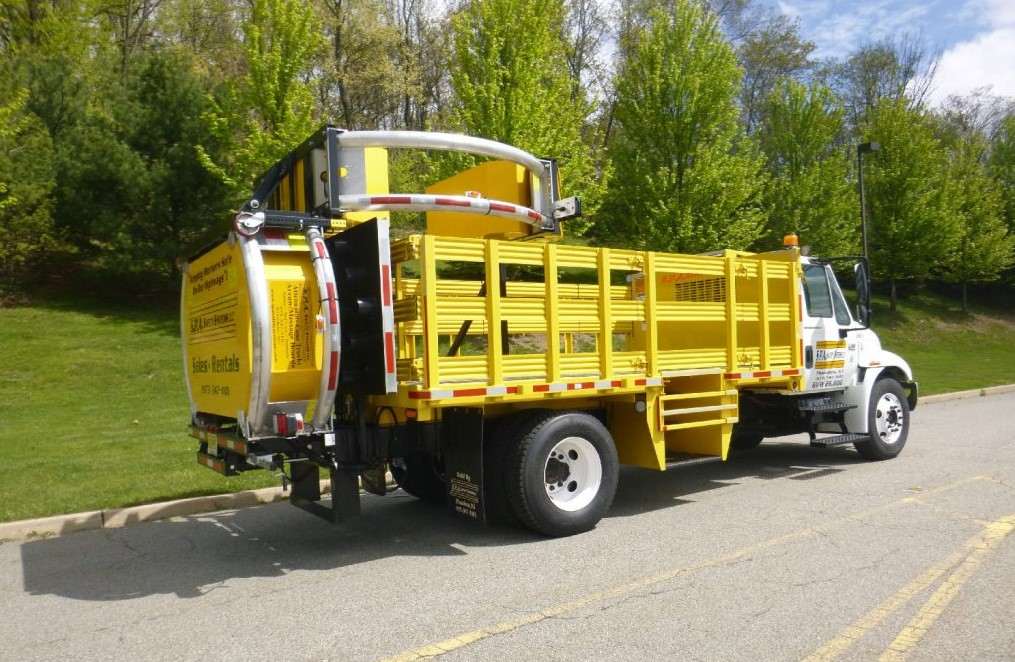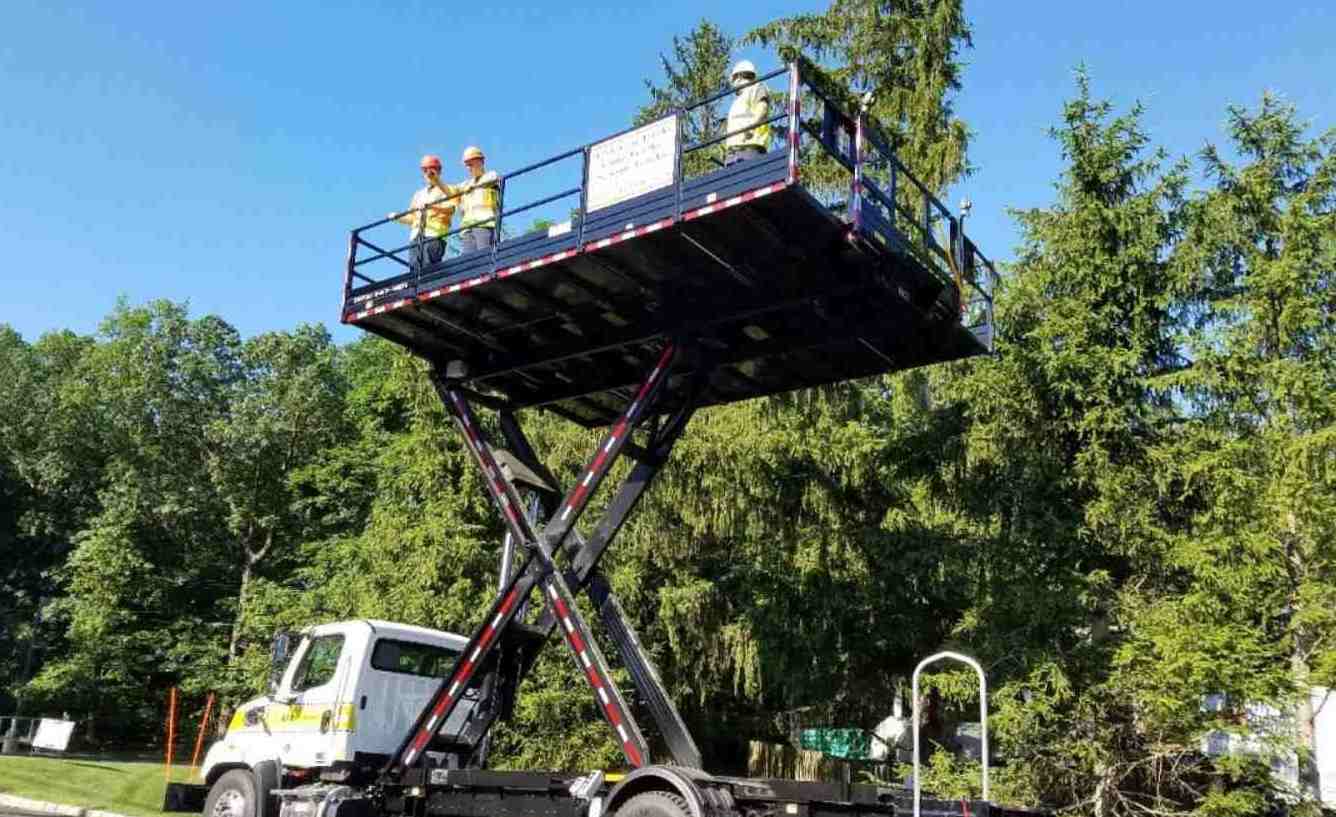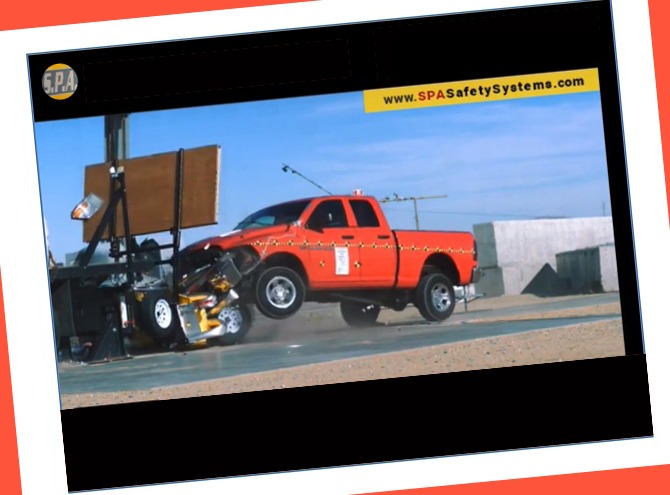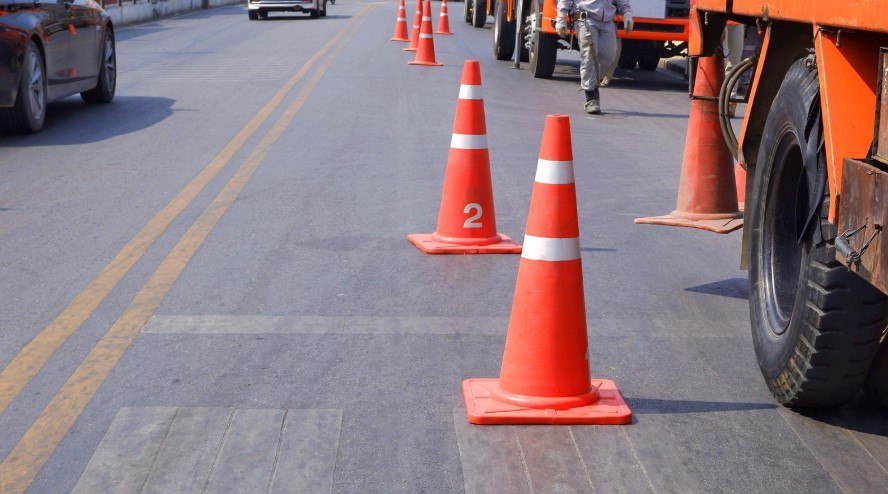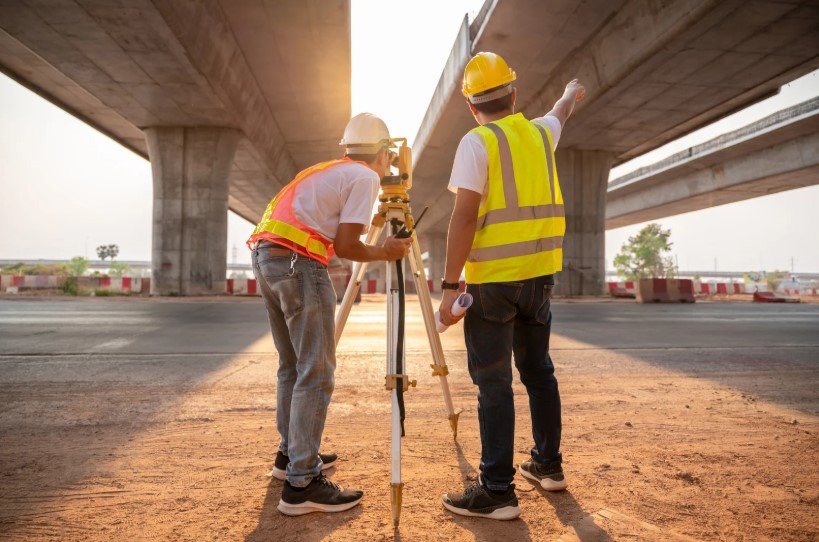Here’s a statistic that should give every project manager pause: in 2024, a staggering 64% of highway contractors reported motor vehicle crashes in their work zones. Let that sink in. More than half of your peers are dealing with intrusions that risk lives, derail timelines, and invite catastrophic liability. The space between your crew and live traffic is a battleground, and cones and barrels are no match for it.
In this high-stakes environment, the Truck-Mounted Attenuator (TMA) is your single most crucial piece of protective equipment. It’s a mobile crash cushion, a physical shield designed to absorb the kinetic energy of an errant vehicle and prevent a devastating intrusion. However, not all TMA trucks are created equal, and choosing the wrong one for your specific project is akin to wearing the wrong size body armor—it offers a false sense of security.
As a safety equipment consultant, I’ve seen the pressures you face. You’re juggling budgets, tight deadlines, and immense liability concerns. The last thing you need is uncertainty about your team’s protection. This guide is designed to cut through the noise and provide a clear, authoritative framework for selecting the right TMA crash truck rental for your job. We’ll move from understanding your project’s specific needs to knowing precisely what to ask a rental supplier.
Your First Step: A 4-Point Needs Analysis
Before you can choose the right equipment, you must deeply understand the environment you’re trying to control. Your project’s unique variables dictate the type of protection you need. Don’t just order “a TMA truck”; analyze your requirements through this four-part framework.
Location & Speed of Traffic
Where is the work happening? A 45-mph urban arterial road requires a different level of protection than a 65-mph interstate. The posted speed limit is your primary guide. Attenuators are rated for specific impact speeds, and using an under-rated unit is a gamble you can’t afford to take. Higher speeds require more robust, heavy-duty attenuators that can absorb greater impact forces.
Job Duration & Type (Mobile vs. Stationary)
Will your crew be in one place for days, or is it a mobile op, such as line stripping, tripping, or pothole repair?
- Stationary Operations: For work that remains stationary, the TMA truck acts as a shadow vehicle, positioned at a strategic distance upstream of the work area. This “roll-ahead distance” is critical; in a crash, the TMA truck will move, and you must ensure it doesn’t roll into your crew.
- Mobile Operations: For moving operations, the TMA truck follows your crew, providing a continuous protective shield. The truck must be nimble enough to keep pace while still meeting all safety and weight requirements.
Lane Closure Width & Setup
How many lanes are you closing? A single-lane closure might require one TMA, but more complex closures or those on broader shoulders may necessitate multiple units to ensure there are no gaps in protection. Consider the geometry of the work zone and where errant vehicles are most likely to enter.
State and Local DOT Requirements
Never assume. States like New Jersey have some of the most stringent highway safety standards in the country. These regulations will specify the required crash rating (NCHRP-350 or MASH), the minimum weight of the host vehicle (typically around 19,000-21,000 lbs), and even details such as the placement of controls in the cab to prevent drivers from stepping into live traffic. Always verify the specific requirements for your jurisdiction to ensure compliance with local regulations.
The 30-Second Roadside Safety Checklist
Feeling the pressure? We get it. Before your next project goes live, ensure you’ve covered your bases. We’ve distilled the most critical pre-deployment safety checks into a simple, one-page PDF.
A Primer on Crash Ratings: NCHRP-350 vs. MASH
When you start looking at TMA truck specifications, you’ll immediately encounter two acronyms: NCHRP-350 and MASH. Understanding the difference is crucial for compliance and, more importantly, for safety.
These are not brand names; they are performance standards developed by the American Association of State Highway and Transportation Officials (AASHTO) to evaluate the crashworthiness of highway safety hardware.
- NCHRP Report 350: Introduced in 1993, this was the long-standing benchmark. It established test levels (TL) based on impact speed. For TMAs, TL-2 (43.5 mph / 70 km/h) and TL-3 (62.5 mph / 100 km/h) are the most common.
- MASH (Manual for Assessing Safety Hardware): Released in 2009 and updated in 2016, MASH is the more current and rigorous standard that has now superseded NCHRP Report 350. The Federal Highway Administration (FHWA) has mandated its use for all new hardware installations
What are the key differences?
MASH testing more accurately reflects the modern vehicle fleet. It utilizes heavier test vehicles and various impact angles to establish more stringent evaluation criteria.
|
Feature |
NCHRP-350 | MASH | Why It Matters |
|
Small Car Weight |
1,800 lbs | 2,420 lbs | MASH accounts for the increased weight of modern compact cars. |
| Pickup Truck Weight | 4,400 lbs | 5,000 lbs |
This change reflects the larger, heavier trucks that are now standard on roads today. |
| Testing Criteria | Optional offset & angled impact tests | Mandatory offset & angled impact tests |
MASH requires testing for more realistic, non-head-on impact scenarios. |
The Bottom Line: While some states may still permit NCHRP-350 certified TMAs under a “normal service life” clause, it is best practice—and increasingly, a requirement—to specify a MASH-compliant TMA crash truck rental. It represents a higher standard of safety.
The Big Decision: Comparing Rented vs. Owned TMA Trucks
For many firms, the decision between renting and buying a TMA truck is a significant financial and operational consideration. While ownership offers immediate availability, it comes with a host of hidden costs and responsibilities. Renting offers flexibility and access to the latest technology without the need for a capital outlay.
Here’s a breakdown of the core considerations:
|
Factor |
Owning a TMA Truck | Renting a TMA Truck |
|
Initial Cost |
High capital expenditure ($150k – $250k+) | Low to zero initial cost. |
|
Maintenance & Repairs |
Your full responsibility. Includes parts, labor, and technician training. | Included in the rental agreement. The provider handles all upkeep. |
|
Technology & Compliance |
Your fleet can become outdated. Upgrading to meet new standards (like MASH) is costly. |
Access to the latest, fully compliant MASH-certified equipment. |
| Storage & Transport | Requires dedicated yard space and logistical planning. |
The rental company delivers to your site and picks it up. |
| Downtime Costs | A breakdown means your asset is not functioning, and your project may come to a halt. |
A reputable supplier provides a quick replacement, minimizing downtime. |
| Utilization Rate | Cost-effective only if used constantly. A sitting truck is a depreciating asset. |
Pay only for the time you need it, ideal for sporadic or seasonal work. |
The Hidden Costs of Downtime: A Quick Calculator
What happens when a project is delayed because you don’t have a TMA truck ready? The costs spiral far beyond the rental fee. Use this table to estimate the true cost of just one day of downtime.
|
Cost Component |
Estimated Daily Cost |
|
Idle Crew (10 workers @ $50/hr for 8 hrs) |
$4,000 |
|
Idle Equipment (e.g., paver, rollers) |
$2,500 |
| Project Delay Penalties (Liquidated Damages) |
$1,000 – $10,000+ |
| Project Management & Overhead |
$1,500 |
| Total Estimated Cost of ONE DAY of Downtime |
$9,000 – $18,000+ |
The average cost of a fleet vehicle being down is estimated to be between $448 and $760 per day, but this doesn’t account for the cascading effect on the entire project. When you partner with a reliable TMA crash truck rental service like S.P.A. Safety Systems, you’re not just renting a truck; you’re buying insurance against these extreme downtime costs.
Your Supplier Checklist: 6 Questions to Ask Before You Rent
Not all rental suppliers are created equal. Your choice of partner is as important as your choice of truck. Before you sign any rental agreement, ask these six questions:
Is your entire rental fleet MASH-compliant?
This should be a non-negotiable starting point.
What are your maintenance and inspection procedures for each truck before it’s delivered?
Ask for their checklist. At S.P.A., every truck undergoes an extensive 53-point inspection before it leaves our yard.
What is your process if a truck breaks down or is impacted on my job site?
You need to know their response time and replacement guarantee.
Can you provide proof of FHWA eligibility for the specific attenuator model?
This documentation confirms the equipment has passed federal crash-test requirements.
Are your trucks configured to meet the particular DOT regulations of our state?
For firms seeking highway safety truck rentals in New Jersey, this is a critical question, as New Jersey’s standards are particularly stringent.
What training or orientation do you provide for our operators?”
A great supplier will ensure your team understands the proper deployment and operation of their specific Attenuator Trucks.
Mini-Case Study: Averting Disaster on I-287
The Challenge: A New Jersey-based paving contractor had a short-term, 3-night milling and paving project on a high-traffic section of I-287. The work required a mobile operation with crews working perilously close to live lanes where traffic speeds regularly exceeded 65 mph.
The Problem: The contractor’s owned TMA truck was an older NCHRP-350 model that had been damaged in a minor yard incident. The repair parts were back-ordered, and the project was scheduled to start in 48 hours. The project manager faced a choice: delay the project and incur penalties, or proceed without a TMA and assume massive risk.
The S.P.A. Safety Systems Solution: The contractor called us in a panic. Within hours, we had a fully MASH-compliant, late-model TMA crash truck rental scheduled for delivery directly to their mobilization site. The truck was equipped with a Scorpion® II Attenuator, a 25-light arrow board, and all controls located in the cab, meeting strict NJ DOT standards. We provided a brief but thorough on-site orientation for their operator.
The Result: On the second night of the project, a distracted driver in a full-size pickup truck drifted from the travel lane and struck the S.P.A. rental TMA at approximately 60 mph. The attenuator performed exactly as designed, absorbing the bulk of the impact and bringing the vehicle to a controlled stop. The driver of the pickup sustained only minor injuries. Most importantly, the work crew, located just 150 feet ahead, was completely unharmed. The TMA truck sustained damage but was quickly replaced by S.P.A. before the next shift, allowing the project to conclude on time. The incident served as a powerful lesson: a reliable rental partner isn’t a vendor; they are a critical part of the safety equation.
FAQs: Choosing The Right TMA Crash Truck Rental For Your Project
1. What is “roll-ahead distance,” and why is it so important?
Roll-ahead distance refers to the space a TMA truck will travel forward after being struck from behind. This distance can be over 100 feet for a large, fast-moving vehicle that is impacting. You must position the TMA truck far enough upstream from your crew so that even after a severe impact, it will not roll into the work area.
2. Are TMAs only for highway-speed projects?
No. While they are mandatory for high-speed locations (typically 45 mph and above), they provide critical protection on any roadway where workers are exposed to traffic. Using a TMA on lower-speed urban or rural roads is a best practice that protects against distracted or impaired drivers. They are also increasingly used for incident management by emergency responders.
3. What does a “Test Level 3” (TL-3) rating mean?
A TL-3 rating, under both NCHRP-350 and MASH standards, certifies that the attenuator is designed to withstand impacts from vehicles traveling at speeds of up to 62.5 mph (100 km/h). This is the standard requirement for work on interstates and other high-speed highways.
4. Can I just mount an attenuator on any of my existing fleet trucks?
Absolutely not. A TMA system is engineered as a complete unit. The host vehicle must meet specific weight requirements (often 19,000 lbs or more) to counterbalance the impact forces properly. Attaching an attenuator to an underweight truck can be incredibly dangerous and ineffective.
5. How much does a TMA crash truck rental cost?
Rental costs vary based on duration (daily, weekly, or monthly), location, and truck specifications. While it may seem like an added expense, research shows that for every crash involving a TMA, there is an average savings of nearly $200,000 in crash costs compared to not using one. The rental fee is a small price to pay for that level of financial and human protection.
Your Crew’s Safety is Not a Line Item
Choosing the right TMA crash truck rental is one of the most significant safety decisions you will make. It’s a direct investment in the lives of your people and the stability of your company. It’s about creating a zone of protection that allows your crew to focus on their work without fearing the traffic at their backs.
Don’t leave safety to chance. Understand your needs, demand the highest standards, and partner with a supplier who treats your crew’s safety as their own.
Ready to secure your work zone with a MASH-compliant TMA truck? The experts at S.P.A. Safety Systems are ready to help. Contact us today for a no-obligation quote.
- Phone: (973) 347-1101
- Email: austin@westchestermachinery.com
- Learn More: Visit our Contact page for more details.

